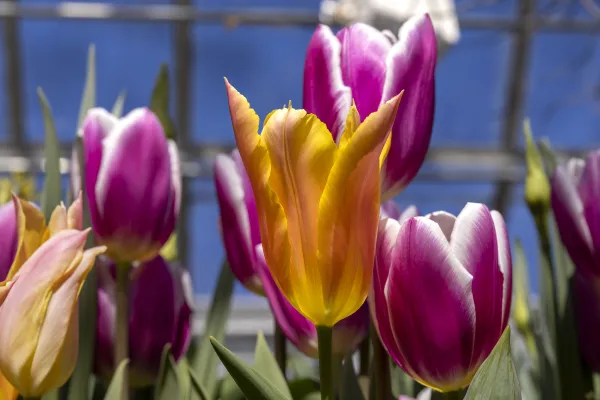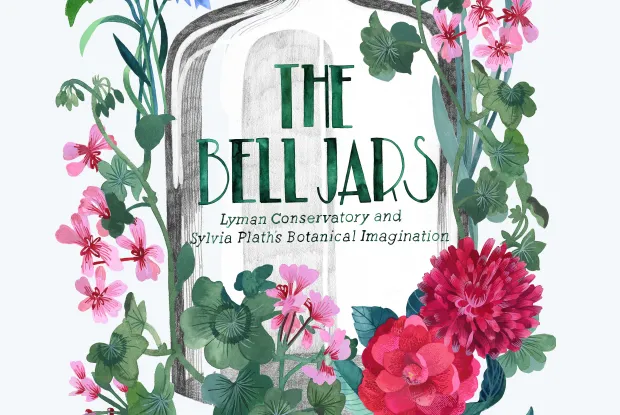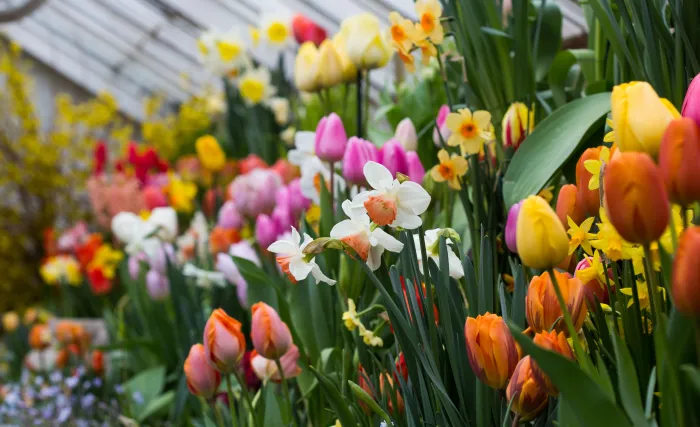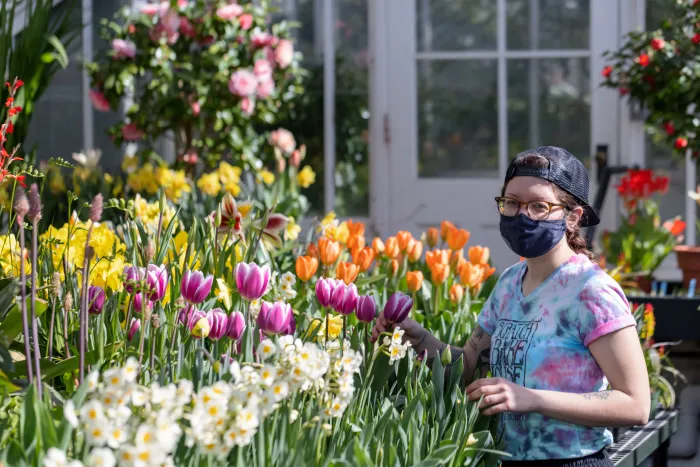2024 Spring Bulb Show
Botanic Garden
Saturday, March 2, 2024 10 a.m. - Sunday, March 17, 2024 4 p.m.

It’s that time of year again! That time when Lyman Conservatory provides a preview of spring colors and scents. With over 9,000 bulbs brought to flower, you won’t want to miss this year’s Spring Bulb Show. The show will once again feature a student-commissioned art installation. Building on the success of last year’s inaugural commission, five students were selected this year through an open call.
The 2024 show runs from Saturday, March 2 through Sunday, March 17. The plant house will be open for extended hours for the show:
- 9 a.m.–10 a.m. daily, members only hours
- 10 a.m.–4 p.m., Sunday–Thursday
- 10 a.m.–8 p.m., Fridays & Saturdays
Please note that during the show we pause our guided tour options to accommodate the crowds. If you do plan to visit as a group of 10 or more during the show, we ask that you let us know through our online scheduler.
Bountiful Blooms
The Spring Bulb Show has been a tradition at Smith since 1901, when it originated along with the college’s first horticulture class. Take a look at some more recent displays of springtime splendor.
Parking
We know that parking can be a challenge during the show as there is no parking on College Lane, and our two visitor's spots are blocked off to serve as a drop off location.
On-street parking can be found on Elm Street near central campus. Additionally, there are visitor spots in the Smith College parking garage on West Street, metered parking on Green Street and a long-term municipal lot behind the Forbes Library on West Street. On weekends and after 5 p.m. on weekdays, permit-only campus lots open up for general parking.
Visit the Smith College parking map for options.
Original Exhibit in Church Gallery
Be sure to check out The Bell Jars: Lyman Conservatory and Sylvia Plath’s Botanical Imagination while visiting the bulb show. Using archival materials and Plath’s literary work as a guide, the exhibit invites visitors to inhabit Lyman as Plath once did. Cross-pollinating the humanities and natural sciences, it examines Plath’s botanical imagination and Lyman’s role in cultivating it.





